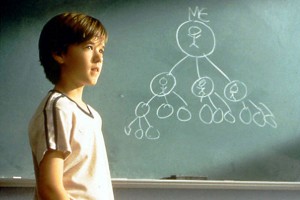What TV show would you rather watch? Tom and Jerry or Sponge Bob? One show is virtually silent and consists primarily of a cat chasing around a mouse. The other is fast-paced, funny and well-animated.
An easy choice? Absolutely. I would watch Tom and Jerry every time. And I would encourage my kids to do the same. Tom and Jerry makes us think. With its lack of constant dialogue, it forces us to imagine what each character is thinking.
Simplicity Begets Creativity
Its simple framework of cat chasing mouse forces the writers to come up with ever more creative ways of telling the same story. And getting the humor demands concentration. The gags usually build up to a crescendo.
Sponge Bob, on the other hand, can be watched mindlessly. Rarely do the scenes build on one another or demand we enter the characters’ heads. The rapid changes in setting make it difficult to concentrate.
Why We Need to Use Our Brains
Why am I sharing this comparison? Because it reminds us of what meaningful learning requires. It reminds us of the skills needed for studying the Bible. As people of faith, we should read texts and experience programs that enlarge the mind.
Texts like the Bible and stories like the Exodus from Egypt are not meant to entertain. They are meant to teach. They are meant to stir the imagination. Like Tom and Jerry, they proceed from a simple framework but illustrate deeper human truths.
In a society that celebrates the mindlessness of Sponge Bob, how do we read and study in a serious way?
1. Ask questions: The Bible is not only an instruction book meant to impart information. Yes, sometimes it does so. More often, however, the lessons and stories demand engagement. Asking why would God inflict the Ten Plagues on Egypt is more important than knowing exactly what those plagues are.
2. Read commentary: Some denominations discourage reading biblical commentaries. They encourage an unadulterated encounter with the text. I vigorously disagree. While we need to choose commentary carefully, learning from the insights of others enriches our experience of the text.
Jewish creativity often came through the literary form of commentary. The edition of the Hebrew Bible studied in most schools places the original text in the center of the page, surrounded ancient and contemporary commentaries. Each page contains a conversation spanning thousands of years.
3. Look for yourself in the text: The Bible remains holy not only because it is the word of God. Its beauty and meaning lie in the truths it reveals about ourselves. Its story is our story.
We journey toward the Promised Land but often fail to make it. We stumble and fall and find strength in God’s promise. Like Adam and Eve we are not perfect, but we bring new life into the world.
The Talmud, an ancient compendium of Jewish law and wisdom, contains the following precept. “Turn the Torah over and over for everything is in it. Look into it, grow old and worn over it, and never move away from it, for you will find no better portion.” To that we can only say Amen.


